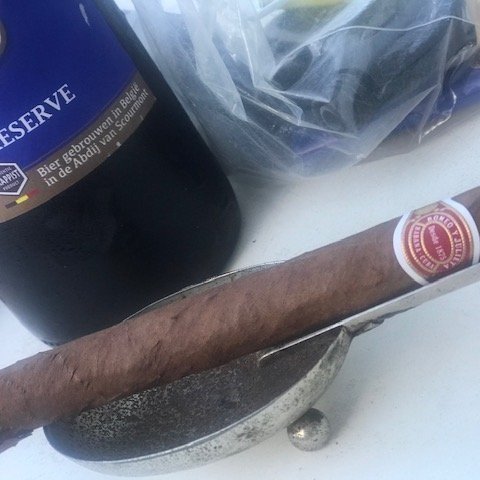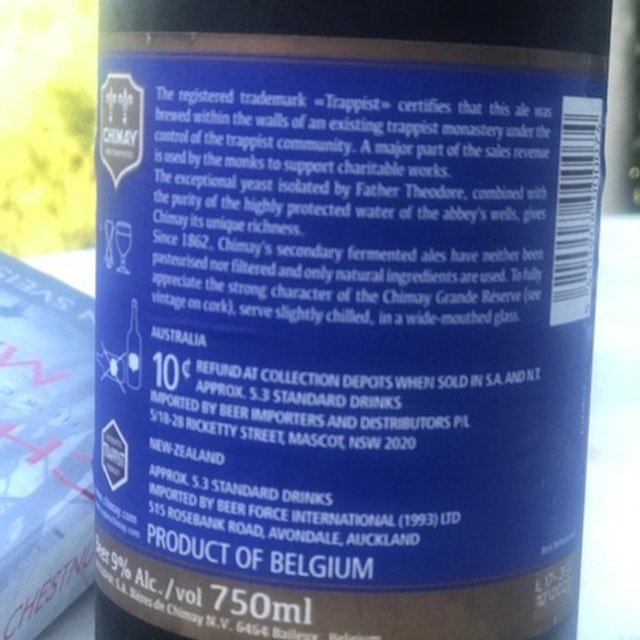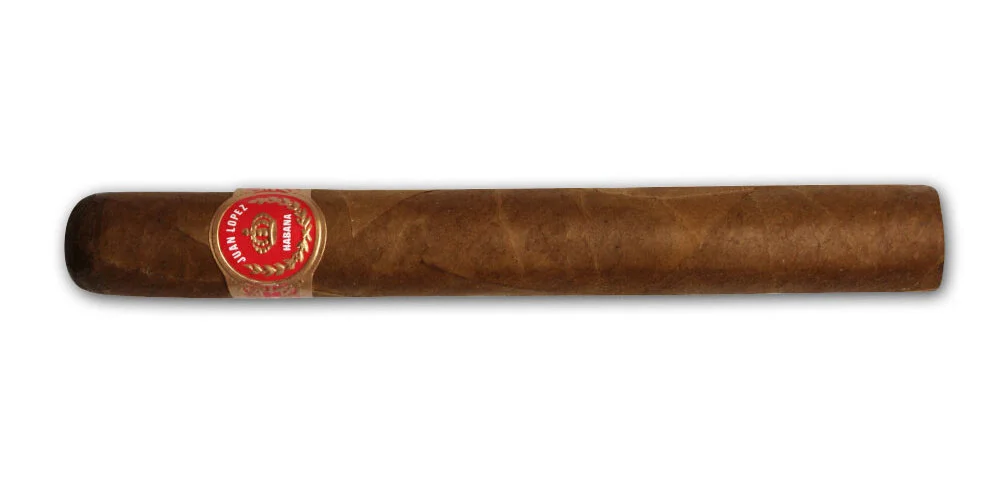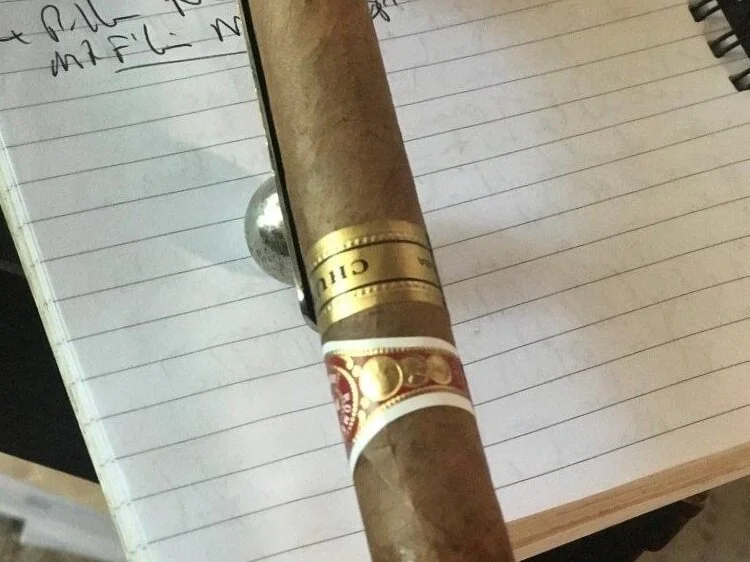Romeo y Julieta Churchill – Chimay Blue Label Beer 2017
Still trapped down south of home but some days are better than others. Today, a parade of humpbacks passing by, leaping presumably for the sheer joy of it. Great to watch.
On those all-too-rare occasions when I do drag myself outside for a cigar, I am often joined by either the local scrub turkeys or the magpies. Neither show any fear and will wander around or even, for the magpies, fly onto the table next to me. All very nice although the magpies do have a fearsome looking beak that could do a lot of damage if you got on the wrong side of one. As I was to witness.
Upstairs looking down and I noticed a magpie in the bushes next door. Thought it might have trapped a small bird in there and was trying to get hold of it. Next thing, it pulls out a reasonable sized snake. Hard to tell what it was but I suspect either a green tree snake or a whip snake. The latter would presumably be poisonous to something the size of a magpie. Did not matter. The poor snake stood no chance. The magpie tore it to shreds. Chopped it up and flew off with pieces for the family, I assume.
I shall be very careful when next the magpie approaches me.
Today’s cigar, the R&J Winston (apols but I lost the 2nd band before I took the pics – did not think to try and restore it), matched with the famous beer, the Chimay Blue.
The cigar had a slightly torn wrapper – these are seconds so no issue – and was more a deep brown than a true russet colour. Veiny and quite a rough wrapper. Still, I soldiered on, as one does. It opened very powerfully with some chocolate and considerably more mongrel than I would usually expect. Otherwise, all good and no complaints over the construction. It may not have thrilled at the opening, but this was a cigar which just got better and better, especially as it settled down. It dropped back to more medium bodied and was exhibiting some earthy notes and some red fruits, though surprisingly no cherry character. A really lovely nuttiness developed towards the latter part of the cigar. This was a cigar that started as nothing special but just got better and better as we went along. My score kept creeping up – 88, 89, 90, 91 and finally, 92. I was very sorry to finish it.
The drink. Chimay Grande Reserve Beer, often known as the Blue beer or Blue Label (and apols to those who caught the piece in Q&P but this is largely pinched from there – after all, you can’t plagiarise yourself).
Consider it my nod to religion. After all, it is brewed by Trappist monks.
I think that the last time I ventured through the doors of a church was when, many years ago, a friend and I attended the funeral of another friend’s father. It did not go quite as planned.
We were late (no pun intended) and forced to squeeze along the back row, which created a major, and majorly embarrassing, disturbance. Given that we were aware (as was everyone, so this is not telling tales out of school) that our friend’s father was a deeply unpopular man with absolutely everyone who knew him, his family included, we could not believe the huge crowd that had assembled (on one occasion, a group of us were invited around to his place but by the time we got there, he’d changed his mind – fair enough – but standing at the door and waving an axe at us to make the point seemed overkill).
Then it dawned on us that we were at the wrong funeral (I really wish I was making this up, but enough time – just – has passed so that I don’t curl up in a corner when thinking about this). What gave it away was that this was a huge crowd and our deceased had no friends and there was a large picture of a complete stranger next to the coffin. Unfortunately, by this time, my friend had told a very bad joke which has an extremely loud punchline – just perfect for a funeral, although more acceptable had we been at the right one – and completely disrupted the entire thing. We then had to push our way back along the row, creating an unforgivable disturbance. I assure you that the only person who wanted to be there less than us was the deceased.
We eventually found the right funeral, but only as everyone was exiting the church, only to discover the departed’s son-in-law going about telling everyone how “shocking” the entire thing was. Which might not have been quite so appalling had his father-in-law not died by accidentally electrocuting himself in his workshop.
For me, religion is a fascinating subject. Why does something in which the vast majority of the planet accept and believe, usually without question, elude some of us so completely? I am the first to admit that some of the finest people I know are deeply religious and carry that with them through their lives. But then, some of the finest people I know don’t have a religious bone in their bodies. I am more than happy for humans to believe in whatever gives them comfort, whether it be a mainstream religion or the divinity of the dancing wombats, provided that it does not lead to violence or any group imposing their will on others. Good luck with that!
What started this seemingly utterly irrelevant digression?
Monks. And beer. Not in the sense of those bumper stickers – “And On The Seventh Day, God Created Beer” – but in particular, Chimay Beer. Or perhaps I should say ale – I come from that generation (and culture) that decrees all lagers, ales, pilsners and so on to be simply beer.
When I first got interested in wines, champagnes, ports and spirits, beer was altogether too standard. Each state in Australia had a brewery, perhaps two, and that was your beer.
In Queensland, it was XXXX. If you walked into almost any pub and asked for a beer, no one would say, “What beer?” You simply got served a XXXX.
Some pubs had Powers, and now and again there was another interloper. But in general, beer in Queensland was XXXX, and that was that. You could say the same for each state.
Needless to say, there was as much rivalry and good-natured banter as if they were football teams (we were always told that Queenslanders drank XXXX because we couldn’t spell “beer”). Woe betides anyone caught drinking an out-of-state beer.
There were, however, a few places where you could find the occasional bottle imported from overseas. Novelties, sure, but interesting. I remember seeing some 750 ml bottles of something with a blue/gold shield on the bottle, which turned out to be Chimay Grande Reserve.
I didn’t know what Chimay was, where it came from, or why it had a vintage on it (vintage beer? That was an entirely bizarre concept), but I bought a bottle. No idea what vintage. A little research back then told me that these beers aged well, so into a case of wine it went, the intention being to drink it in a couple of years.
As these things are wont to do, the best laid plans . . . I completely forgot about it and only discovered it many years later. I had thought that I had probably done it a disservice, leaving it for so long, but I remember being wowed by it and immediately buying a few more to lay down.
One of these must have been a 2017 Chimay Grande Reserve as that is what I came upon recently. Yes, I had forgotten them again.
A glorious winter’s afternoon a few weeks ago. Winter here means that you will need more than a T-shirt in the early mornings, but expect electric blue skies without a hint of a cloud, crisp days with hardly a breath of wind, and a maximum of around 22 to 23°C. I have no doubt that we have the best weather on the planet from around late April to September. And some of the worst the rest of the year, although sun worshippers might disagree.
But the perfect time for a cigar outside in sight of the ocean. The Chimay seemed like the perfect match (it was). Toss in a good thriller (loving the books of Mick Herron at the moment), and it does not get better.
I was always told that beer is best when first released, when freshest. And that is true for most of them. But there are a few, especially those that have seen the inside of an oak barrel, that do benefit from further ageing. Hefty alcohol is also useful as a preservative. Personally, I’d also suggest that those with some sweetness, such as porters and stouts, benefit more from ageing than those without.
Chimay is a Belgian Trappist beer. To expand on beer to the extent I would wish would literally require a book. Or at least a large chunk of the internet.
Any beverage hoping to qualify as a Trappist beer must be recognized as such by the International Trappist Association (I’m not making that up). And for that to happen, the beer must be brewed by Trappist monks. Only 13 monasteries are entitled to claim they brew Trappist beer.
Of these 13, five are in Belgium, two in the Netherlands, and one each in Austria, Italy, England, France, Spain, and the United States. Not all produce beer, and Achel, one of the Belgian breweries, can no longer call its beers Trappist as its last monk passed away earlier this year.
The Trappist order is a Catholic order that originated in the Cistercian monastery of La Trappe, France. In the mid-seventeenth century, the abbot decided that Cistercians were becoming a touch too liberal and he wasn’t having it. Something called the strict observance was born. Most importantly, from this came the decree that all monasteries should be self-supporting. Beer and cheese were obvious choices as revenue generators.
Many Trappist monasteries have been destroyed over the centuries by wars and revolutions. Indeed, during the French Revolution the state confiscated the La Trappe monastery and closed various religious houses, forcing the monks to flee to Switzerland, Russia and Belgium. Hence, the strength of the Belgian Trappist beer industry. Despite all this, the rules for these beers are still in place.
Basically, the rules are as follows.
1. The beer must be brewed within the walls of a Trappist monastery, either by the monks themselves or under their supervision.
2. The brewery must be of secondary importance within the monastery, and it should bear witness to the business practices proper to a monastic way of life.
3. The brewery is not intended to be a profit-making venture. The income covers the living expenses of the monks and the maintenance of the buildings and grounds. Whatever remains is donated to charity for social work and to help persons in need.
Chimay has sometimes been criticized as its production obviously exceeds the monks’ needs (sales figures are around 40 million Euros annually, with production in excess of 120,000 hectoliters). However, the order located in the abbey of Scourmont in Belgium, defends this by noting that the profits are used solely for supporting the monastic community, for charities and for the development of the region.
Chimay’s origins began in 1862 when monks from Westvleteren Abbey left to begin a separate operation at Scourmont. To begin with, things did not go well. The intention was to rehabilitate what they termed “delinquent children.” Sadly, the first prior was jailed with 20 years’ hard labour for multiple counts of sexual assault.
A second soon followed with a ten-year sentence. A further two enjoyed shorter terms for physically abusing students. One of the brothers then decided to burn down the church, library and a newly constructed dormitory.
The reason? He was miffed at being reprimanded for breaking his vow of silence. He may have subsequently regretted that, as he was sentenced to death. Eventually, Scourmont was granted the status of an abbey and things settled. Beer and cheese are always preferable to the guillotine.
Water for the brewing comes from two wells, both located inside the monastery walls. The solids from the beer mash are recycled into fodder for the cows that produce the various cheeses made by the monks. Bottling is offsite, which is permitted, and the beer will then referment in the bottle for three weeks. Fifty percent of production is exported.
Chimay offers various beers that are named by color of the label. Blue, or Grande Reserve as it is also known (there is also one with rum barrel influence, but I’ll leave that aside), is in a 75 cl bottle and a hefty nine percent alcohol though you’d hardly notice it, such is the balance.
It is top fermented and not pasteurized. Second fermentation is in oak barrels and the third in the bottle. The 2017 batch saw six months in barrels. The yeast was isolated by one of the monks. I would have loved to provide more information from the horse’s mouth, so to speak, but the website has cleverly subtitled the instructional videos in the same language as the chap in them is speaking – or perhaps a different language but certainly one beyond me.
Grande Reserve was first brewed in time for Christmas in 1948.
This is an ideal winter beer (well, our winter – I can’t comment for other, less fortunate, parts of the globe) and full of interest. Wonderfully complex, it is undoubtedly powerful and full flavored, but so well balanced. There are notes of vanilla, caramel, and roasted malts. A coffee bean, mocha character with chocolate notes. Complex, clean, and with a finish that exhibits no cloying at all.
Whether you drink it soon after purchase or cellar it for extra richness and complexity, this is a cracking beer and definitely one that should be on your radar. And it is a brilliant match if you want a full-flavored cigar.
KBG.










